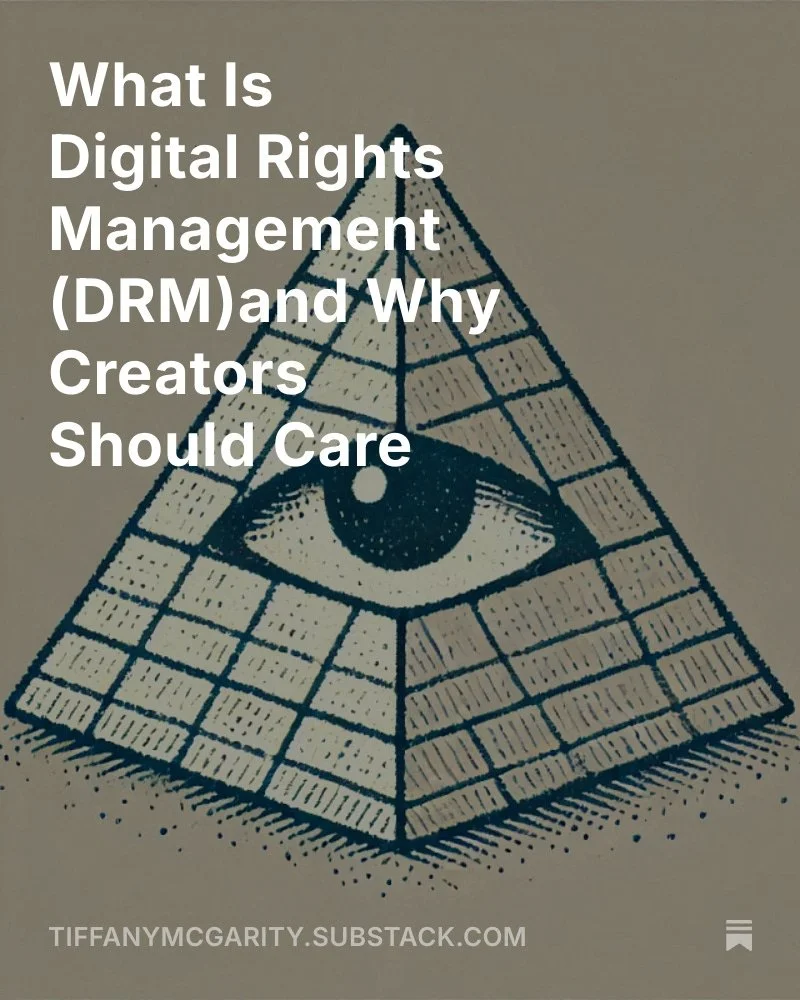What Is DRM and Why It Could Be the Most Important Tool for Creators in 2025
When people hear “DRM,” many think of outdated restrictions—music you couldn’t transfer, ebooks you couldn’t keep, or files that refused to open.
That version of DRM is history.
Today, Digital Rights Management is evolving into something more valuable: a tool that gives creators real control, visibility, and revenue in a digital environment where none of those are guaranteed.
If you’re a photographer, visual artist, or brand working online, here’s why DRM may be one of the most important tools you’re not using.
What DRM Actually Is
Digital Rights Management (DRM) is technology that governs how digital content—images, video, audio, writing—is used, shared, or monetized. Think of it as a set of rules embedded directly into your work.
These rules can define who can use your image, under what terms, and how it can be accessed. In modern systems, DRM works quietly and invisibly in the background, protecting creators without disrupting users.
Why Creators Need It Now
Content moves fast. Faster than attribution. Faster than licensing. Often, faster than consent.
Today, creators are facing challenges like:
Image theft and unauthorized reuse
AI scraping content without permission
Metadata stripped by social platforms
Lost licensing revenue from unclear terms
DRM helps answer these problems directly, not by locking things down, but by making ownership, licensing, and intent part of the content itself.
What Modern DRM Looks Like
When DRM is built for creators—not just corporations—it looks very different. Here’s how it works:
1. Usage Rights Travel With the File
Your image is no longer just a file. It carries its own license, attribution, and usage terms wherever it goes, readable by machines and platforms.
2. Control Is Clear and Enforceable
You can define how your content can be reused—commercially, personally, or not at all. DRM makes those rules visible and enforceable, even after a file is downloaded or reshared.
3. AI Training Opt-Out Signals
New tools embed signals that say “Do Not Train,” helping creators opt out of unauthorized AI use—a major issue as regulations like the EU’s AI Act begin to reshape the internet.
4. Licensing Becomes Instant
Instead of chasing down infringers, DRM can offer clear licensing paths embedded directly into the content. If someone finds your image, they can pay you to use it, instantly and legally.
Isn’t Metadata Enough?
Metadata is important. But it’s fragile. Uploads, compressions, and edits often strip it away.
DRM, when done right, goes deeper. It survives edits. It travels with the content. And when combined with metadata, it creates both clarity and control.
What to Look for in a Creator-Focused DRM Tool
If you’re considering DRM, ask these questions:
Does it embed rights and licenses directly into the file?
Can it persist through compression, cropping, or sharing?
Does it offer AI opt-out signals?
Is it machine-readable and platform-compliant?
Can it enable direct licensing or payments?
How We’re Building This at Metapyxl
At Metapyxl, we’re designing DRM as part of a bigger rights infrastructure—one that puts creators in control without making users jump through hoops.
We focus on:
Invisible protection that survives editing and sharing
Embedded licenses that remain enforceable
Tracking and analytics to monitor where your work travels
AI compliance signals for the post-regulation era
Easy pathways for legal use, licensing, or monetization
We don’t believe in locking down content. We believe in helping creators get credit, get paid, and stay in control.
Final Thought
If your work is online, it’s vulnerable. And as AI grows and regulations evolve, rights management won’t just be helpful—it will be necessary.
DRM is no longer a wall. It’s a foundation.
And for creators in 2025, it might be one of the smartest tools you can add to your workflow.

